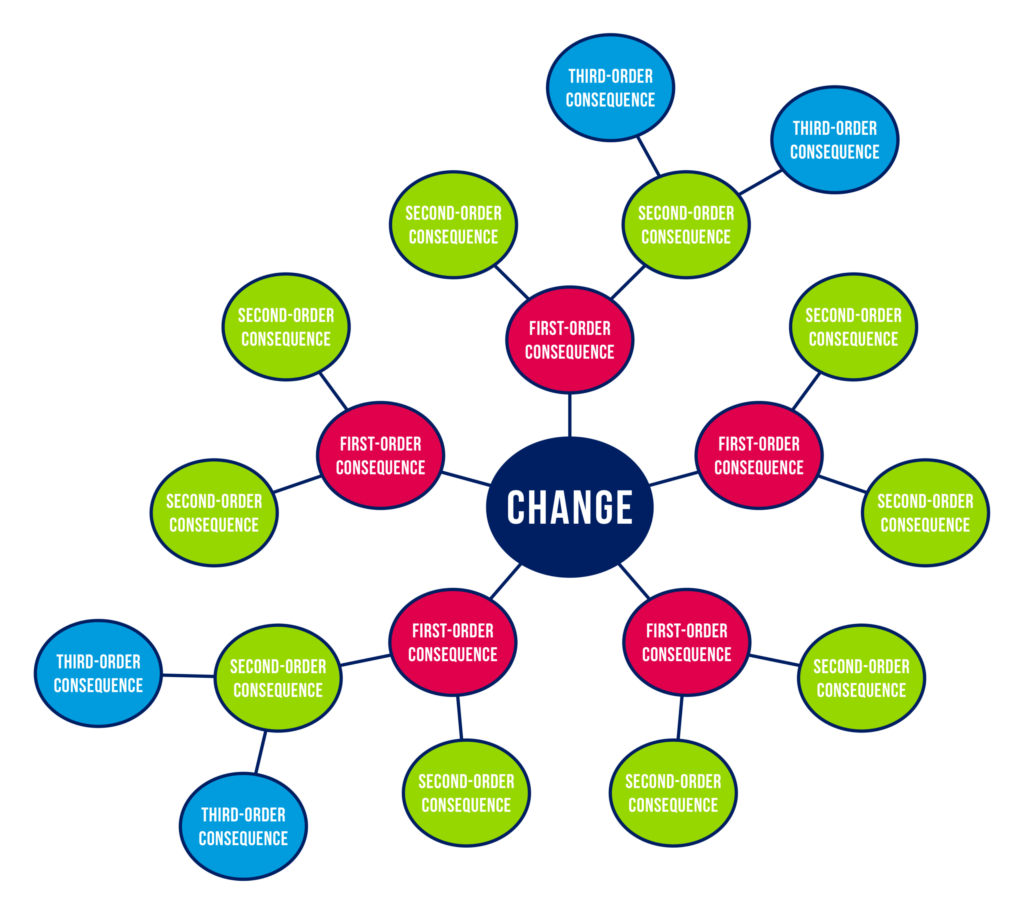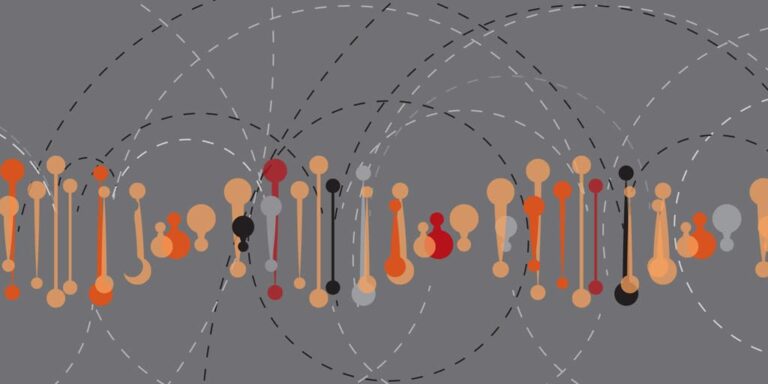Dealing with change can be daunting.
Whether it involves thinking through the implications of a decision, considering possible outcomes of an event such as COVID-19 or ideating on the impacts of a trend, facing change means grappling with a certain level of uncertainty. No one can know the future, and it is impossible to think through the full range of implications of a change.
However, using Futures Wheels can help surface implications beyond the immediate, first-order consequences of change and can help develop an understanding of causality by mapping how a change can create a ripple effect of other changes. Examining those implications can help clarify how to navigate the murky waters of change and can bring to light other potential changes that might have gone unexamined.
Futures Wheels were created by futurist Jerome C. Glenn in the early 1970’s to help visualize the direct and indirect implications of a decision, trend or event. I find them to be a fantastic visual idea generation tool. While Futures Wheels can be completed solo, they are best done in groups. If you are grappling with change, you can use Futures Wheels to help push your thinking beyond the immediate, sometimes obvious implications of change by creating your own Futures Wheel using the steps outlined below.
Step 1: Gather your materials and choose a scribe
If you are working in a group and in the same room, you will need something to write on, preferably something large such as a piece of flipchart paper. If you are working in a digital setting, you will need a mind mapping tool such as the one available from Miro. With your materials in hand, you will also need to pick a scribe. Futures Wheels require a fair amount of writing or typing, depending on what environment you are working in. Picking a scribe will make the process go smoothly.
Step 2: Identify the change
Pick a change you wish to explore. This could be an event, a trend or a decision that needs to be made. Write the change in the center of a piece of paper or on a flipchart or type it in the center of your mind map. Then circle it if you are using paper or your software does not do so automatically.
Step 3: Identify direct, first-order consequences
Start by generating ideas about possible direct, first-order implications of the change you selected. Write each consequence in the form of a short, specific statement. Then circle it and connect it to the change you wrote down in step 2 at the center of your Futures Wheel. It can be helpful to write each consequence as a news headline to avoid being too general with the implications you surface. It is also important to remember that you are not trying to tell a cohesive story across your Futures Wheel and that you will generate both positive and negative implications.
Step 4: Identify indirect, second-order consequences and beyond
Generate ideas about possible second-order consequences of the direct, first-order consequences that you identified in step 3. Add them to your Futures Wheel in the same way. Then repeat the process by surfacing third-order consequences and beyond. Challenge yourself to see how many orders out you can get in the amount of time you have available!
Step 5: Analyze implications
With your Futures Wheel complete, you will have identified many implications of the change you chose to grapple with. If you are working in a group, discuss which consequences present the biggest opportunities and which pose the biggest challenges. Depending on your reasons for creating a Futures Wheel, these could be opportunities and challenges for your organization, community, a key stakeholder group or something else entirely.

Step 6: Prioritize and plan
Prioritize your list into implications to respond to now, implications to plan for and those to monitor. Consider how the implications you prioritized might affect your plans and what might need to be done to design new offerings or adapt plans to manage the challenges you surfaced or to leverage an opportunity you identified.
The Futures Wheel is a simple tool that is a great addition to anyone’s planning or decision-making toolbox. As we grapple with the ongoing implications of COVID-19, Futures Wheels can help us think through hidden implications and long-term impacts of the virus and of the plans that are being mounted in response to it. Exploring both direct and indirect consequences of change can make our plans more robust and more responsive to a broader range of possibilities and outcomes.





